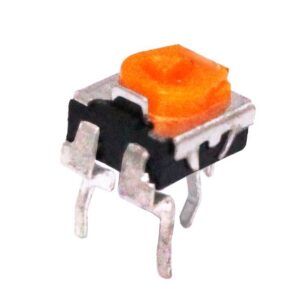3386P-1-203LF 20K ohm Potentiometer Bourns :
Potentiometer bourne for commercial applications typically have a resistive element made of carbon or cermet (a combination of ceramic and metal), or of resistance wire wound on an insulated
copper mandrel. The main advantages of wirewound potentiometer bourne are their low
temperature coefficient, higher power dissipation, lower noise, tighter resistance tolerance, and, when used as a variable resistor, the excellent current-carrying capacity through the wiper due
to the lower contact resistance. Also, their long-term resistance stability with time and temperature is slightly better than cermet. Cermet potentiometer bourne provide a wider resistance range (10 ohms to 5 mega ohms), versus a maximum of 50K ohms for wirewound). Also, the wiper output can be set closer to the desired value since the resistive element presents a continuous contact surface for the wiper, as opposed to the discrete turns (resolution) of the wirewound. Other advantages with cermet are the lower reactance in high-frequency applications, the smaller sizes available, and the generally lower price than wirewound types.



